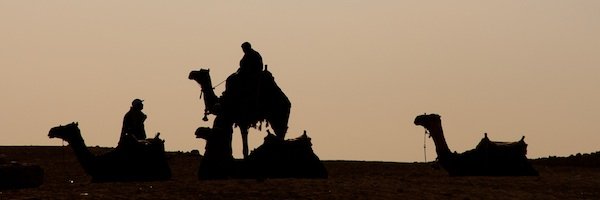It’s difficult to start to understand a city as Cairo in a short visit of only a couple of days. However, if you let yourself walk around the streets, get a taxi or sit down to drink a tea at any small street shop you could get a glimpse of the soul of this chaotic, overwhelming and marvelous city. This is not a story of Cairo, we don’t try to make a minimally comprehensive description of the city. It’s only a short trip around the experiences, feelings and fears that Karla and myself have done on our two-day visit to Cairo.
Day 0
Arriving at an unknown airport in an unknown city at night is always a stressing experience. However in this case the new installations have probably a balsamic effect in our minds, especially if you went from Khartoum in Sudan (and more if you had there the opportunity to watch the “only men” passengers flying to Teheran). In any case when you arrives, you have to navigate a hoard of taxi drivers (and managers)...
Leia Mais... / Read More...








Social Profiles